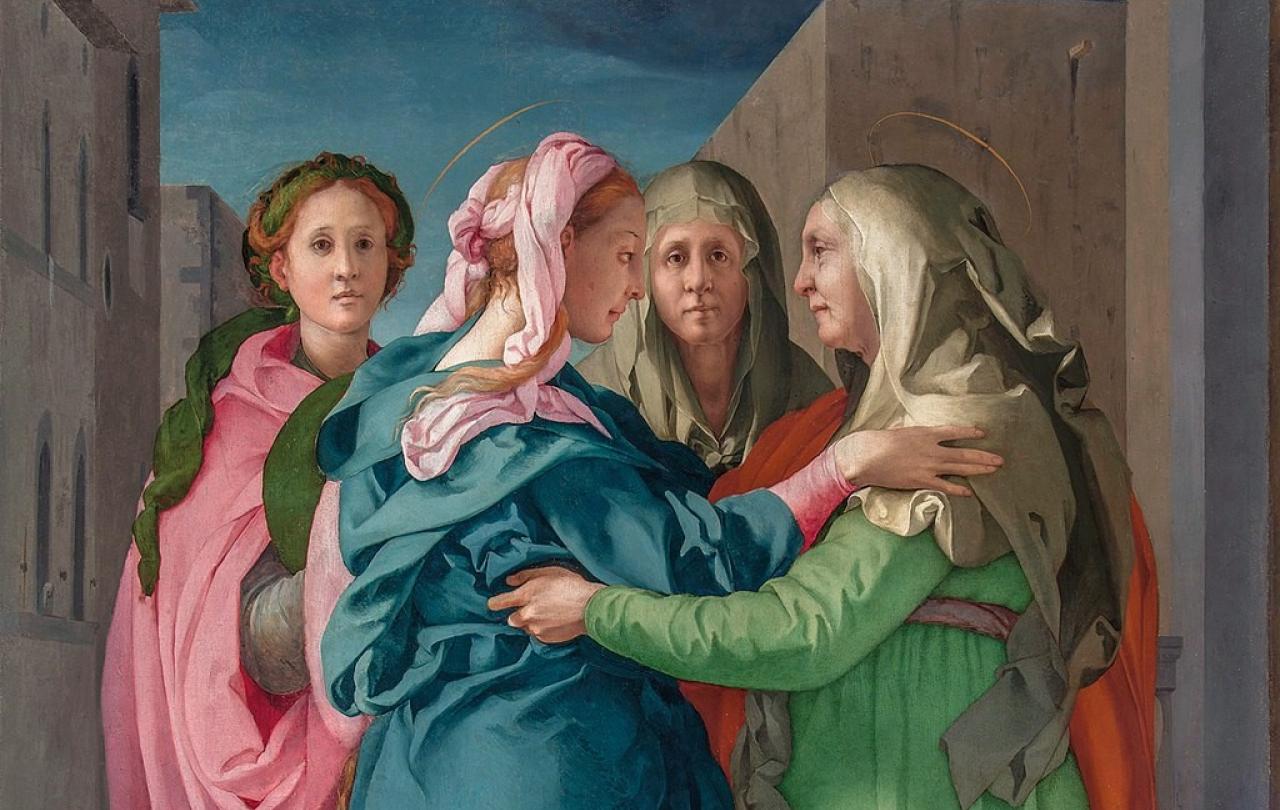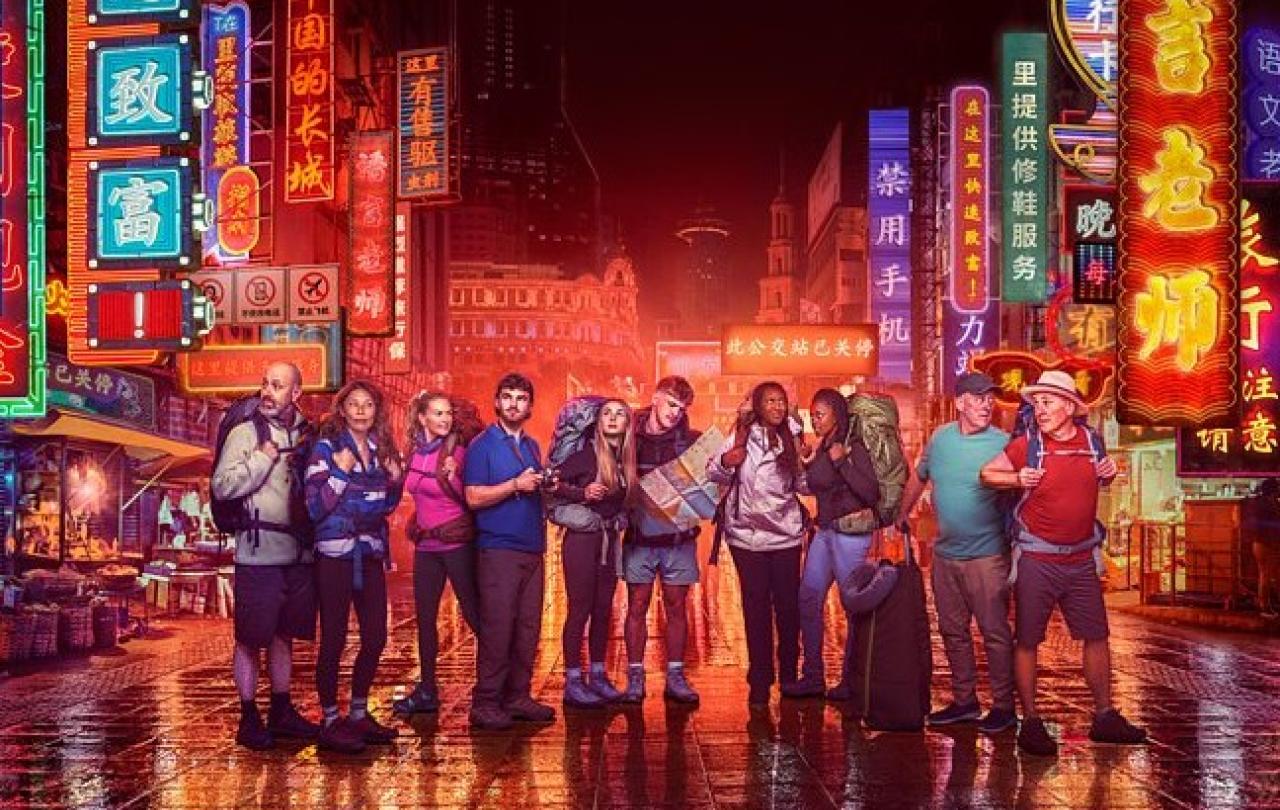
It is a gift when we encounter something — a walk, conversation, work of art — that gives insight into a story we’ve long held dear (or often, long wrestled with). Last week in a cinema in Limerick, a moment in the film Wicked did just that.
For the last year or so, I have been thinking about an event in the Gospel of Luke traditionally called the Visitation. This is the moment when Mary, the mother of Jesus, after realizing she was pregnant, traveled from Galilee to the hill country in Judea where her cousin Elizabeth lived. Elizabeth was also pregnant with a son, who would be John the Baptist. When these two women see each other, the word ‘greet’ is used several times in quick succession: a moving ethos occurs of this very human act of greeting — seeing, beholding, recognizing, welcoming. In a moment of abundant overflow, they vocalize praises from the deep heart; Elizabeth calls out to Mary, and Mary responds back.
This Visitation moment has captured hearts and minds through the centuries. One of my favourite examples is the sixteenth-century painting by Pontormo, and a 1995 work of video art by Bill Viola, which brings this painting to life. In both of these pieces, we see the kind of beholding that the Visitation involves. We see warmth enveloping warmth. We see the brightness of recognition. We see tender enfolding and embrace. We see welcome. I have come to believe that this greeting we humans long for.
They see, greet, and welcome each other in an overflowing moment of beholding and recognition.
So, last week in the cinema. I am a big fan of Wicked and from the start of the film was thrilled with the cinematic version. But at the start of the scene when Elphaba (played luminously by Cynthia Erivo) walks onto the dance floor of the local disco, the film shifted. It was as if the whole movie slowed into something different: a kind of halved-open, shadow-light play of the heart.
Elphaba, realizing how the hat she had put on was all too wrong, instead of running, leans into this electrifying space of vulnerability and exposure. As silence pounds, she lifts her hand to her forehead and bizarrely wriggles her fingers. Steps of a strange dance follow. Others look on, mortified and disgusted. Galinda (played incandescently by Ariana Grande) watches, her face stamped with distress. She had given Elphaba that hat, as a trick. Then, she decides and acts: she joins Elphaba on the dance floor and tries to follow the steps.
Narratively, the moment is the hinge to their friendship, securing them together in scenes that follow. But, before the narrative arc moves on, it dips down and stretches out. The lens rests closely on the two faces, separately, and we are drawn into the slopes of Elphaba’s face and the shine in Galinda’s eyes — and in the way they are drawn into the reality of the other’s face.
They see, greet, and welcome each other in an overflowing moment of beholding and recognition. Such seeing shapes both. Such seeing brings them to be part of something whole. Sitting there in the cinema, my breath caught: I felt I was watching an iteration of that moment in Judea’s hill country from long ago, when two women also greeted each other.
Serendipitously, because we are in Year C of the Anglican Church’s Lectionary — as in, we are in the third set of scheduled readings from the Bible — this year’s fourth Sunday of Advent reading presents the Visitation. This Sunday, as we tip from Advent season (a stretch of time marked by waiting) into Christmas (celebrating the birth of Christ and God-made-flesh, God-with-us), the long-suffering waiting of Advent funnels through this stunning moment of recognition. As the nativity narrative unfolds around them, Mary and Elizabeth enact this mutual, abundant recognition, and we have the chance to behold them beholding each other, so that our own sensibilities for seeing and being seen are given a glimpse into how this kind of wholeness-making can happen.
I think too their praises give us an even deeper glimpse into what makes this wholeness real. They rejoice in the God who comes to us, and is-with-us, who heals us so that we too can participate in this kind of greeting — with God, with ourselves, and with one another. And that healing is so needed; as Mary’s words ring out unfettered, she praises God for empowering the lowly, those caught in dreadful structures of power. The ethos of deep greeting can happen no other way.
A dear thing happened right after that Wicked dance moment. In the dark theatre, I looked over to my friend, three kids between us, with a smile — and without missing a beat, she raised her hand to her forehead and wriggled her fingers. Her daughter and I followed suit. We were all wriggling our hands at our foreheads, communicating a new, just-seen signal for the abiding welcome that friendship means.
Join with us - Behind the Seen
Seen & Unseen is free for everyone and is made possible through the generosity of our amazing community of supporters.
If you’re enjoying Seen & Unseen, would you consider making a gift towards our work?
Alongside other benefits (book discounts etc.), you’ll receive an extra fortnightly email from me sharing what I’m reading and my reflections on the ideas that are shaping our times.
Graham Tomlin
Editor-in-Chief





